As one of the first enduro-focused 29ers, Trek's Slash was starting to show its age. It has enjoyed racing success under Katy Winton, Pedro Burns and Florian Nicolai, but its geometry was getting left behind by rivals such as the new Specialized Enduro.
So, as you might expect, the all-new Slash is far more up to date. It's designed to thrive on the ever more demanding terrain seen at enduro races, with more suspension travel and longer, lower, slacker geometry.
It's also got a steeper seat tube angle and a lighter frame, so it should climb better too. What's more, it's gone one up on Specialized by offering internal down tube storage in both the aluminium and carbon frames, along with a few features unique to Trek.
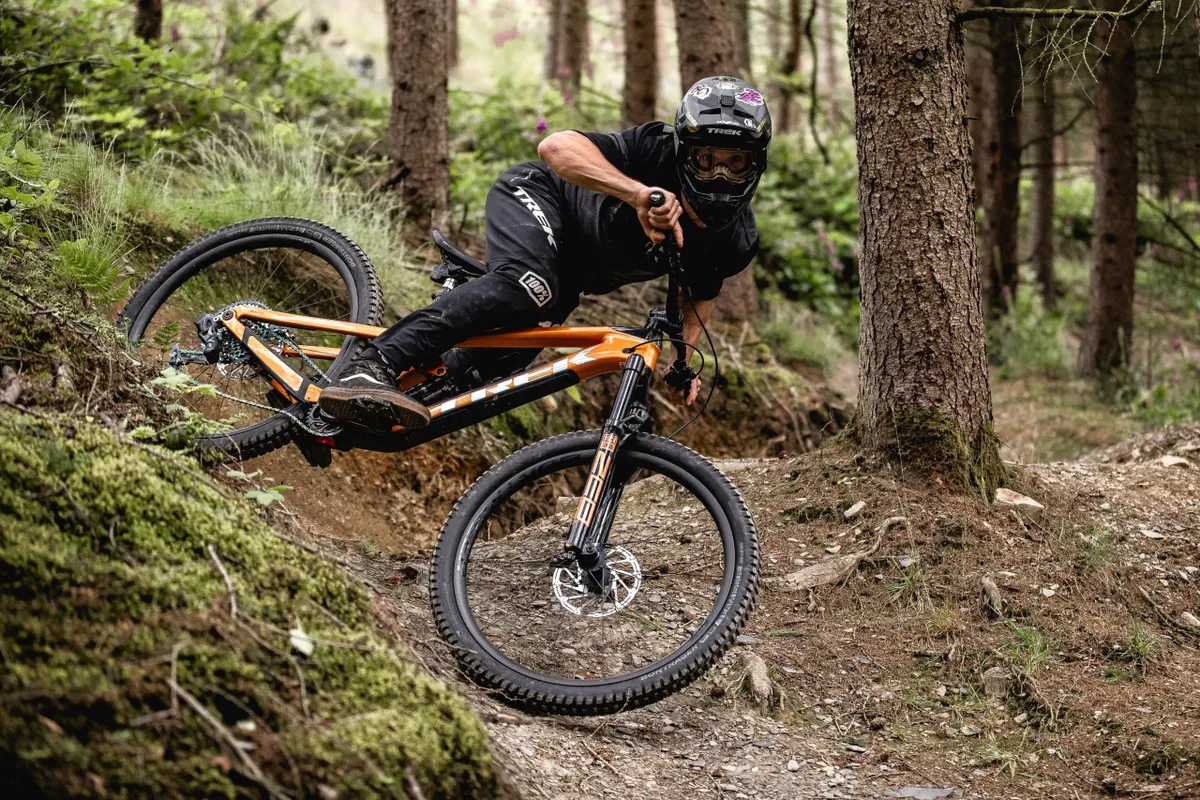
We've already seen the new bike racing at the first round of the EWS in Zermatt, Switzerland, and now we can share all the details.
2021 Trek Slash geometry
Perhaps the most important update is to the Slash's shape.
It still uses Trek's Mino Link system, which can raise or lower the bottom bracket by 7mm while altering the head and seat angles by half a degree, and because we usually rode the old bike in its low setting, we'll compare the new geometry in that configuration.
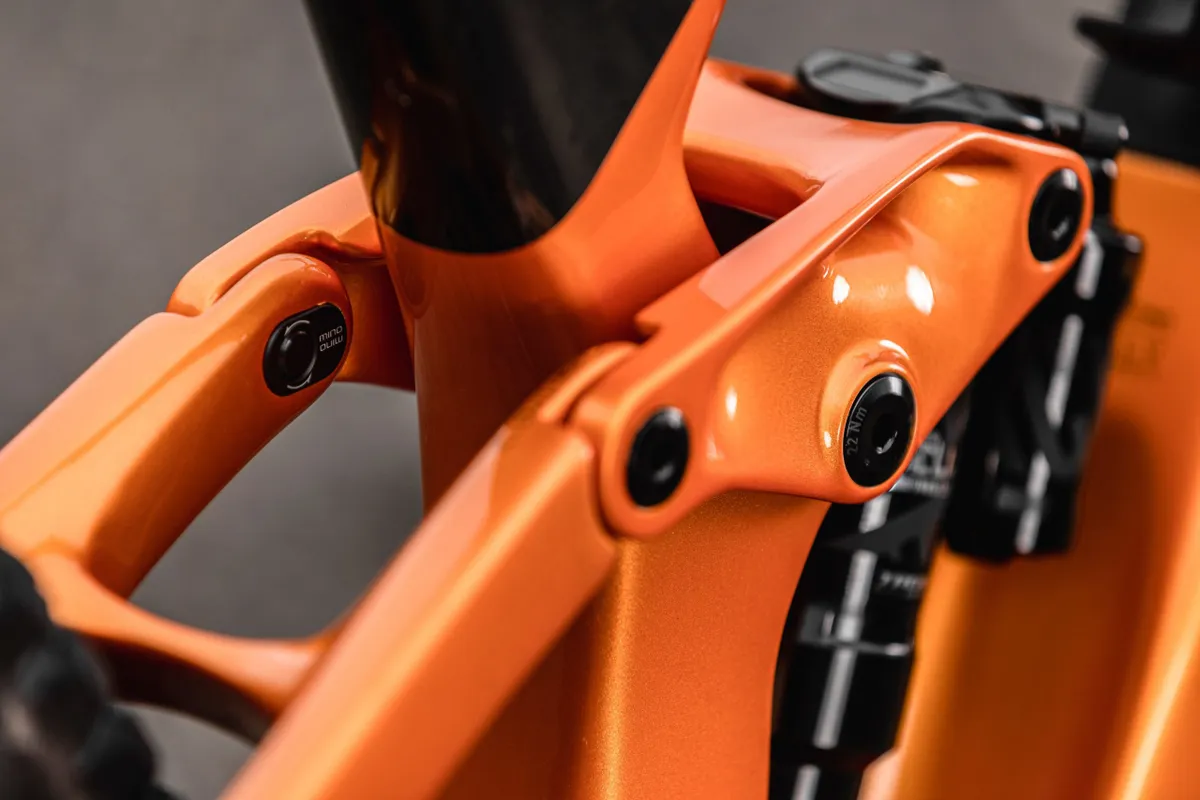
The head angle is now 1-degree slacker, at 64.1 degrees in the low setting; the reach has increased by 15mm to 40mm size-by-size (the largest frame now has a whopping 515mm reach); the wheelbase has grown by 25mm to 50mm depending on size. Pretty much all of this growth comes from the front-centre because the rear-centre has only increased by 2mm, to 437mm.
Meanwhile, the bottom bracket drop has increased by 8mm, and now sits at 345mm in the low setting. That's quite low for a bike with this much travel.
One particular criticism of the old Slash was the slack seat tube angle, which made it tricky to tackle steep climbs. And while the travel-adjustable fork on some models helped a little, it was almost an admission of the problem. Well, it's now 2 degrees steeper, measuring 75.6 degrees in low and 76.1 degrees in high.
This is still a bit slacker than some of its rivals, but definitely a step in the right direction.
To complement the longer reach numbers, Trek is speccing very short 35mm stems across all sizes, along with (now almost ubiquitous) short offset forks.
Internal storage in alloy frames as well as carbon
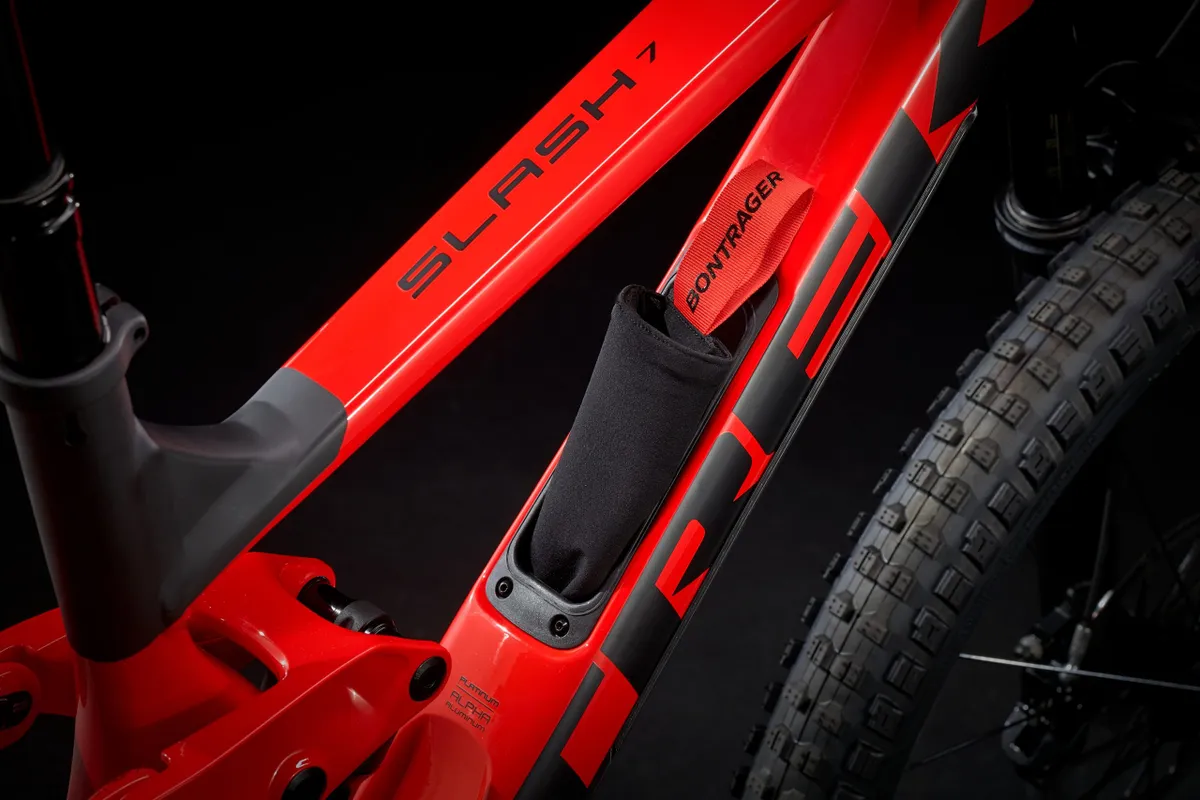
While Trek certainly wasn't the first to think of turning the down tube into a handy storage area, it's brought the idea (which we're big fans of) to more people.
We first saw Trek do it with the Fuel EX trail bike and Domane road bike. In the case of the Slash, both the carbon and alloy frames have the handy compartment for snacks, pumps, tools and the like, while Specialized only offers down tube storage on its pricier carbon frames.
With the cheapest Slash coming in at £2,650, Trek's internal storage is available at a lower price point.
Trek Slash suspension
Trek has boosted the suspension travel by 10mm at each end – it now serves up 160mm in the rear and 170mm up front.
The Slash still uses Trek's ABP (active braking point) suspension system, which works a bit like a Horst-link design, but the chainstay pivot is placed further back and is concentric with the rear axle.
Unlike a single-pivot layout, the brakes are not directly connected to the rear swingarm; this causes the suspension to sit higher in its travel under braking, where the suspension is softer.
While the layout looks similar to the old, the main pivot has been raised slightly to give the bike a bit more anti-squat, so it should pedal more efficiently.
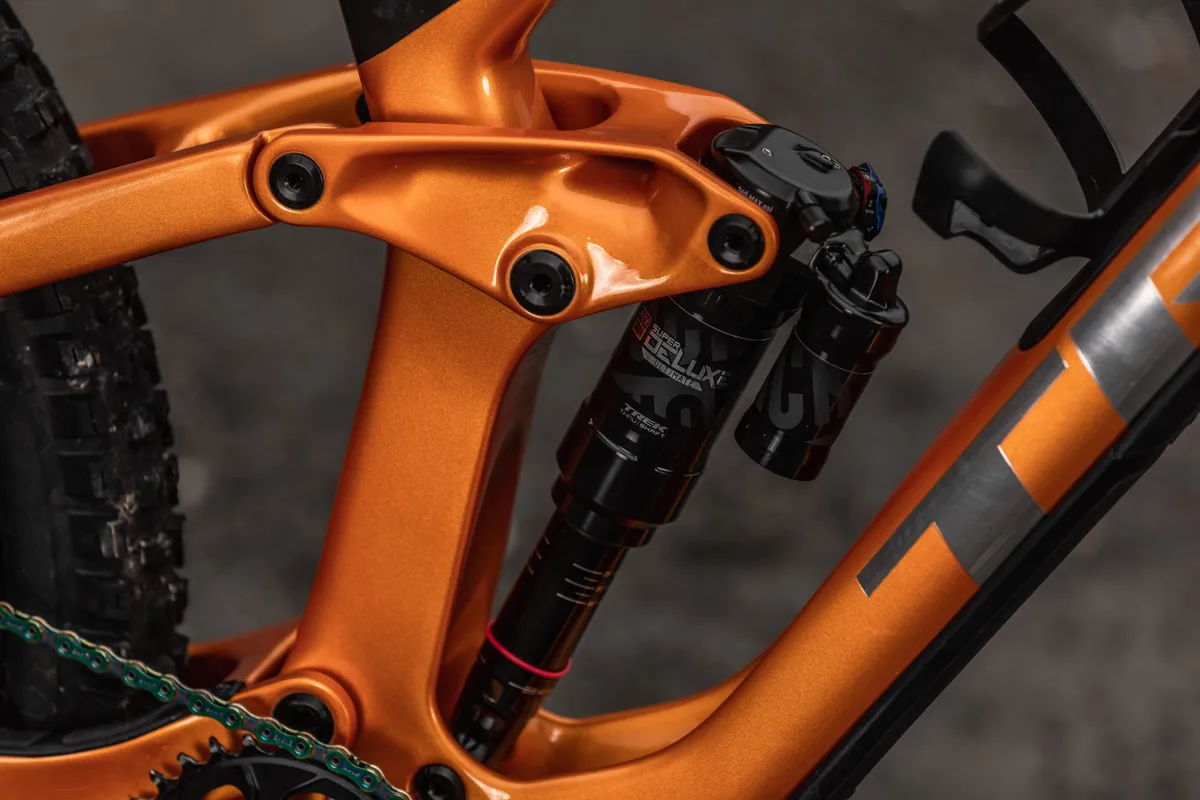
Some Slash models use Trek's Thru-shaft shock technology, with a Thru-shaft version of the RockShox Super Deluxe shock. Thru-shaft shocks have a damper shaft that goes all the way through the damper body and out the other side. This means the shaft doesn't displace any extra oil as it enters the damper.
This allows Trek to dispense with the dynamic internal floating piston (IFP), which compensates for the oil displaced by the shaft in most shocks. Trek claims this reduces friction so the shock changes direction faster and tracks the ground better.
However, it's worth remembering that IFP friction is only a small component of the total friction in a shock, particularly an air shock. Also, the Thru-shaft design requires a second shaft seal where the shaft exits the damper, which inevitably adds some friction back in.
Trek insists the removal of the IFP more than makes up for this, but we'd say that any reductions in friction resulting from Thru-shaft are unlikely to be game-changing.
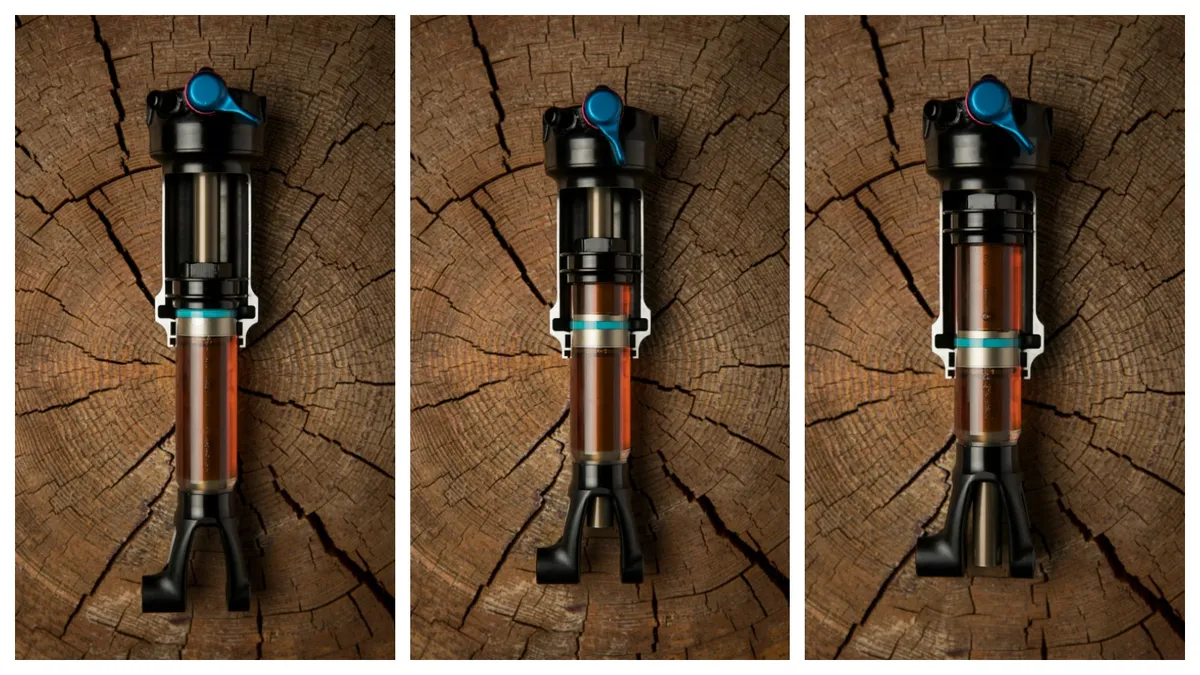
The Slash is compatible with some non-proprietary shocks (in fact, two of the less expensive models come with regular, non-Thru-shaft shocks). However, the standard RockShox Super Deluxe won't fit because the lockout lever hits the frame.
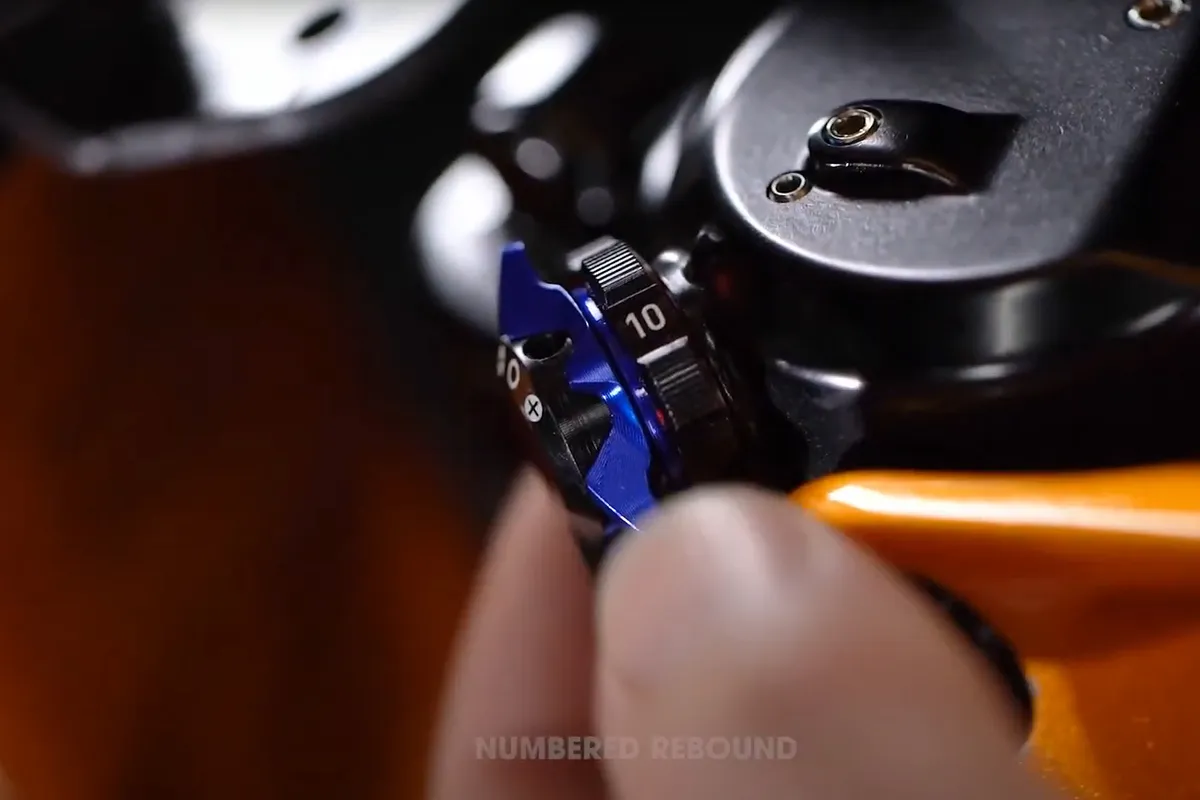
The proprietary RockShox shock has a few interesting features besides the Thru-shaft damper. There's a lockout lever for climbing, plus a three-position dial to adjust the low-speed compression damping in the open mode. The rebound dial sits behind this and is numbered to make it easy to tell which rebound setting you're in without counting clicks.
The shock also has a larger negative spring volume than the standard DebonAir can. This means it should be softer at the start of the stroke, but firmer after sag. Apparently this change was inspired by the RockShox MegNeg air can, but it's not quite as extreme.
Interestingly, Trek has moved away from its RE:activ regressive damping technology, first used in 2014, in favour of shimmed valves. This change is apparently because modern enduro racing demands sensitivity over pedalling efficiency.
Knock Block 2.0 is better, and it's optional
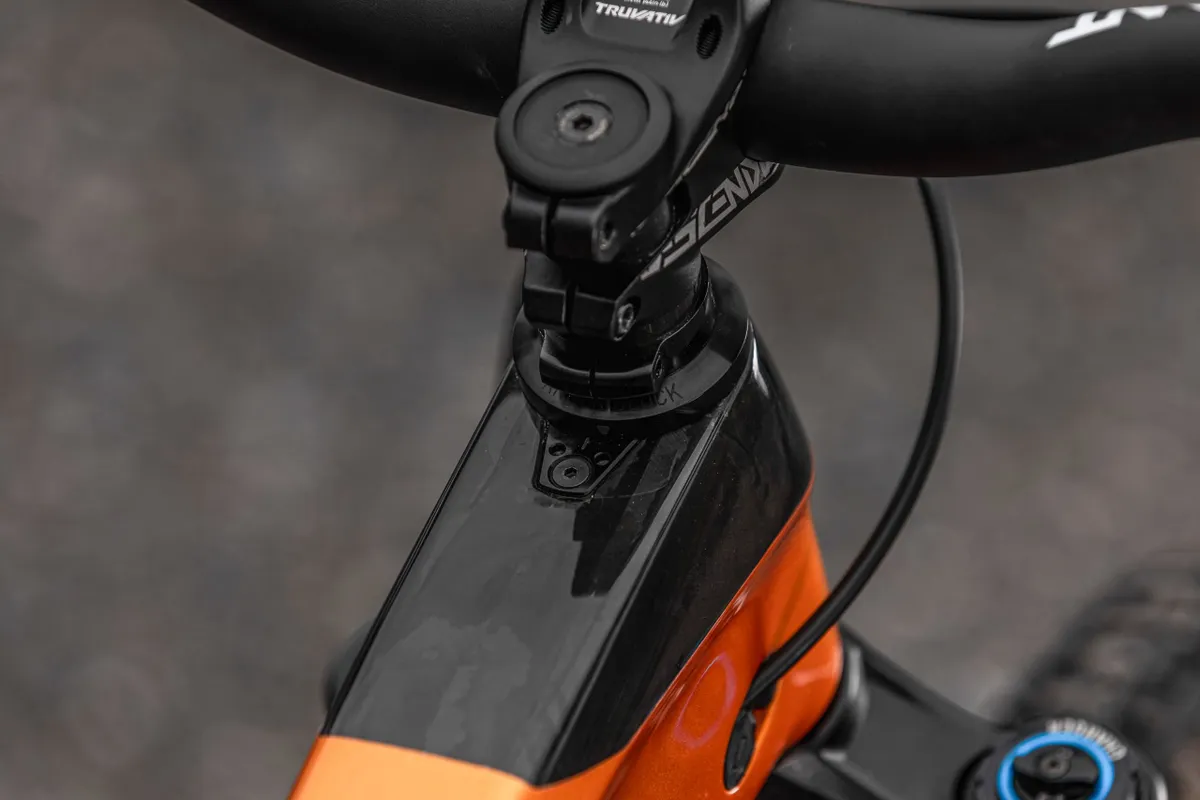
Knock Block is Trek's system for stopping the bars turning past a certain angle. This has two advantages: first, it prevents the brake levers hitting the top tube or the cables pulling out if the bars spin in a crash. Second, it allows Trek to design straighter (and therefore lighter) down tubes because they no longer need to curve upwards to avoid the path of the fork crown when spun round.
The Knock Block 2.0 in the new Slash is only there for the first reason, because the curved down tube on the new Slash clears the fork crown. The new Knock Block allows a greater steering angle than before – the bars can turn by 72 degrees, up from 58 degrees. This should allow for tighter turns, but we rarely found the steering lock of the old system to be a problem on the trail.
It's also removable, so if your stunt repertoire is broader than ours you can still turn the bars as much as your cables will allow.
Big seat tube for big dropper posts
Fans of standard conformity will be disappointed by the 34.9mm diameter as well as the proprietary shock. The stouter seat tube standard is not unique to Trek, but it is less common than 30.9 and 31.6mm diameters. The idea is to increase space for dropper post internals and boost reliability and stiffness.
The seat tube insertion length has been increased too, allowing the use of longer travel dropper posts. Complete bikes are equipped with droppers from 150mm to 200mm (Medium and Medium/Large sizes get 150mm posts, Large frames get 170mm, XL frames get 200mm).
It's a little heavier, but still light
Trek claims the 2021 carbon frameset weighs just 2,450g without the shock. It credits this low weight (for an enduro frame) to Trek's OCLV carbon layup and the fact that the ABP suspension layout has a pivot concentric with the rear axle rather than on the chainstay, which apparently makes for a lighter overall structure.
However, with the shock and hardware the carbon frame weighs 3,180g – the previous frame was slightly lighter at 3,060g. (These are claimed weights in both cases). Trek puts that slight increase in weight down to the bigger shock, down tube storage and 34.9mm seat tube.
2021 Trek Slash models
Trek Slash 7
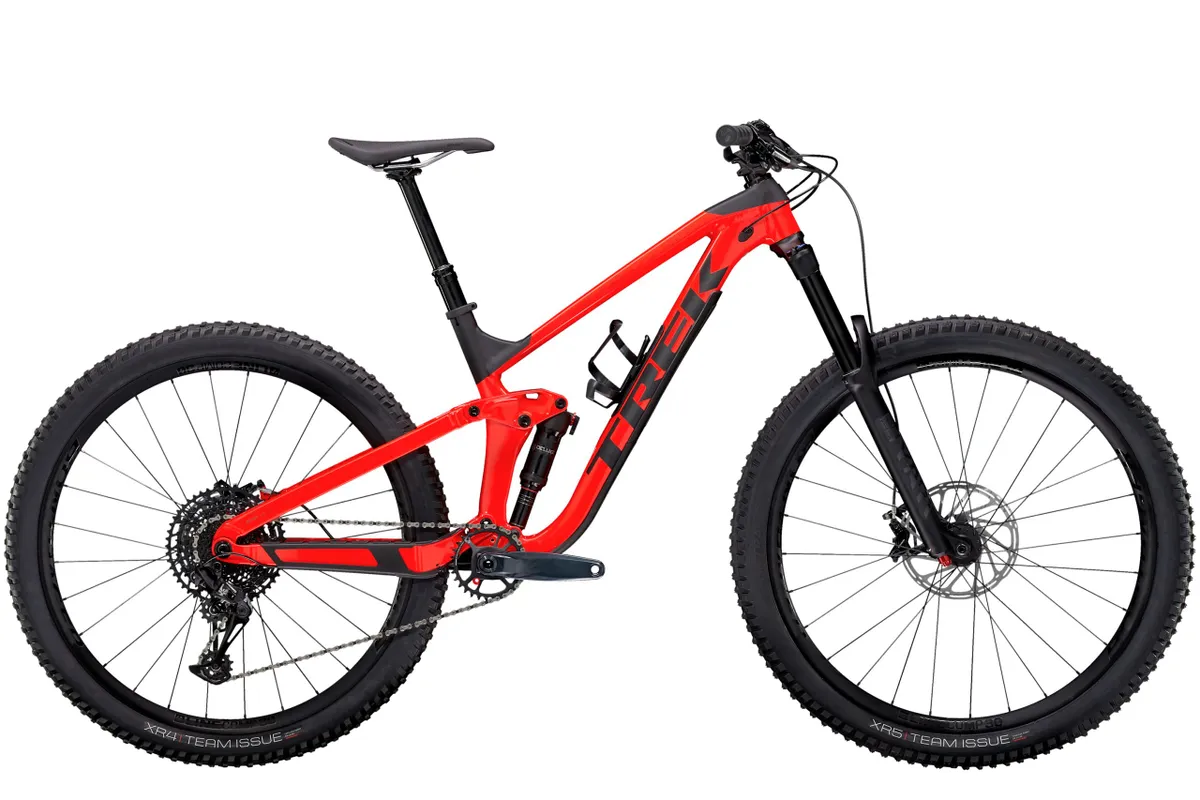
- Frame: Alpha Platinum Aluminium
- Fork: RockShox Yari RC
- Shock: RockShox Deluxe Select+
- Drivetrain: SRAM NX Eagle, 11-50t
- Brakes: SRAM Guide T
- Price: £2,650 / €3,499 / $2,999
Trek Slash 8
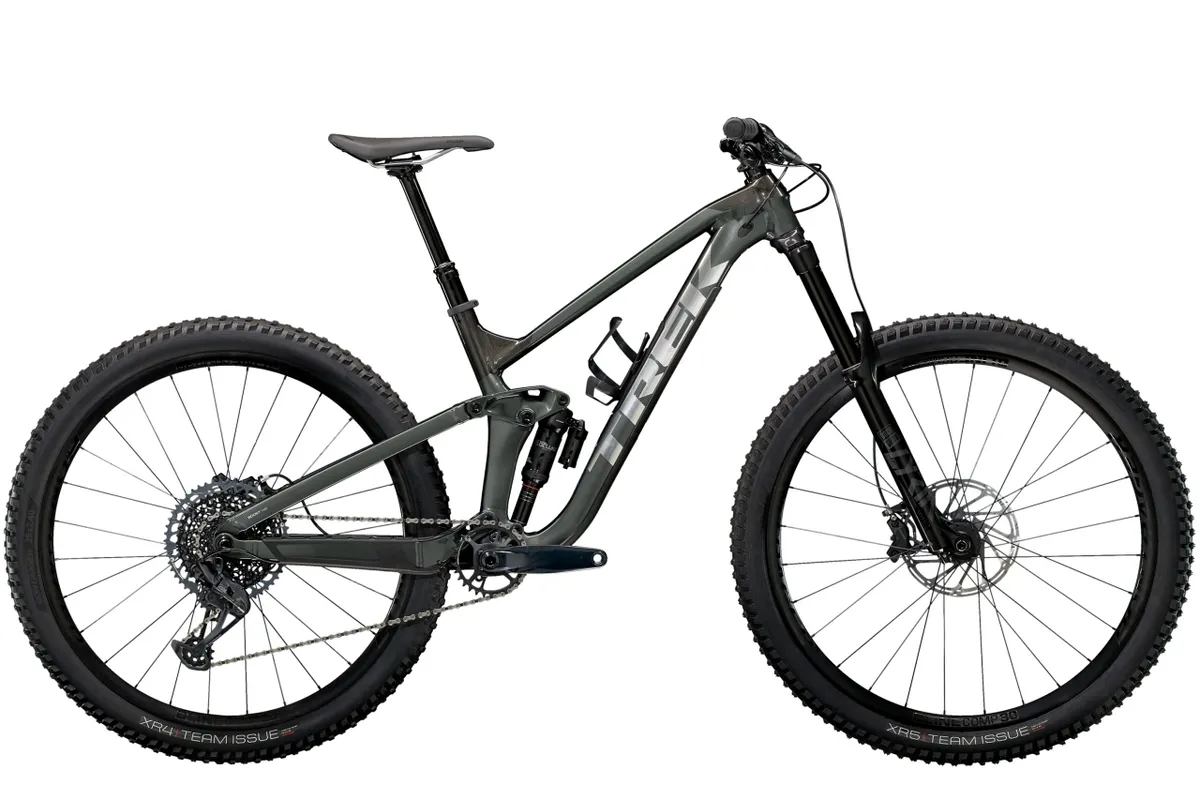
- Frame: Alpha Platinum Aluminium
- Fork: RockShox Lyrik RC
- Shock: RockShox Super Deluxe Ultimate, Thru shaft three-position damper
- Drivetrain: SRAM GX Eagle, 12-speed, 10-52t
- Brakes: SRAM Code R
- Price: £3,100 / €3,999 / $3,499
Trek Slash 9.7
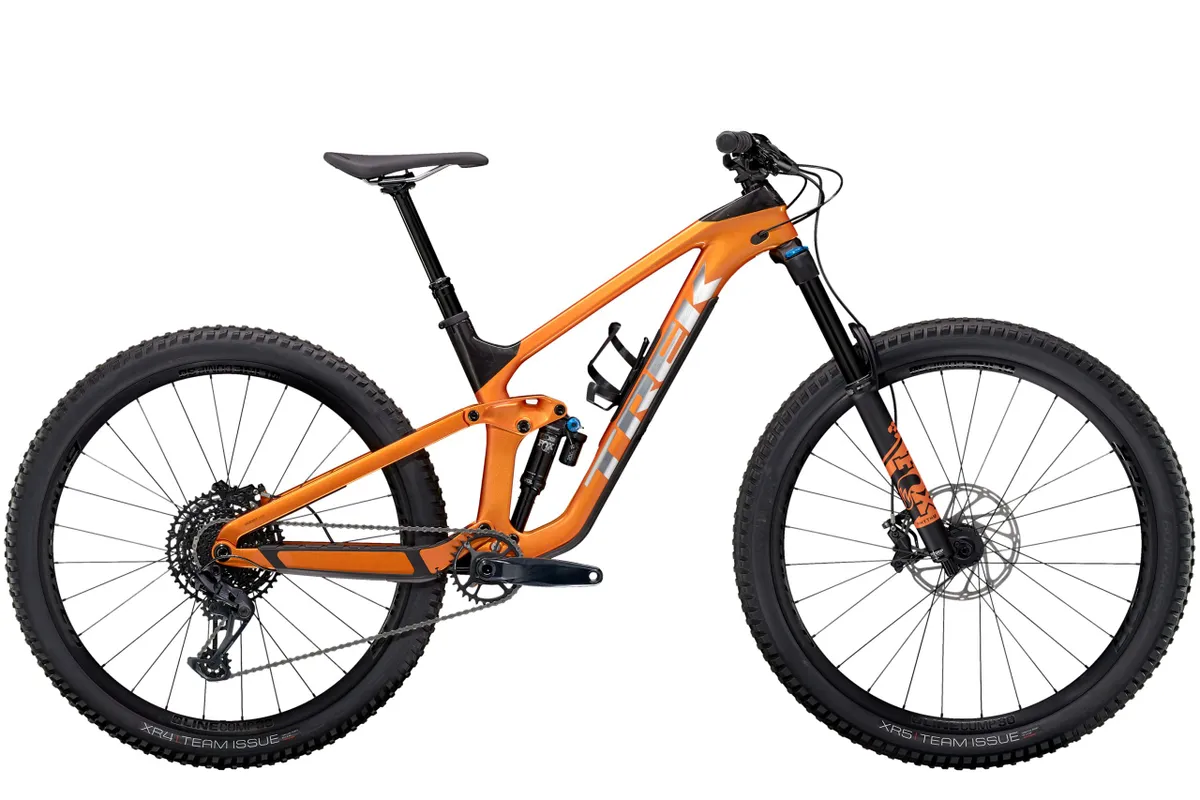
- Frame: OCLV Mountain Carbon main frame and stays
- Fork: Fox Rhythm 36
- Shock: Fox DPX2, EVOL air spring, DPS damper
- Drivetrain: SRAM NX/GX Eagle, 12-speed, 10-52t
- Brakes: SRAM Code R
- Price: £5,250 / €4,799 / $5,999
Trek Slash 9.8 XT
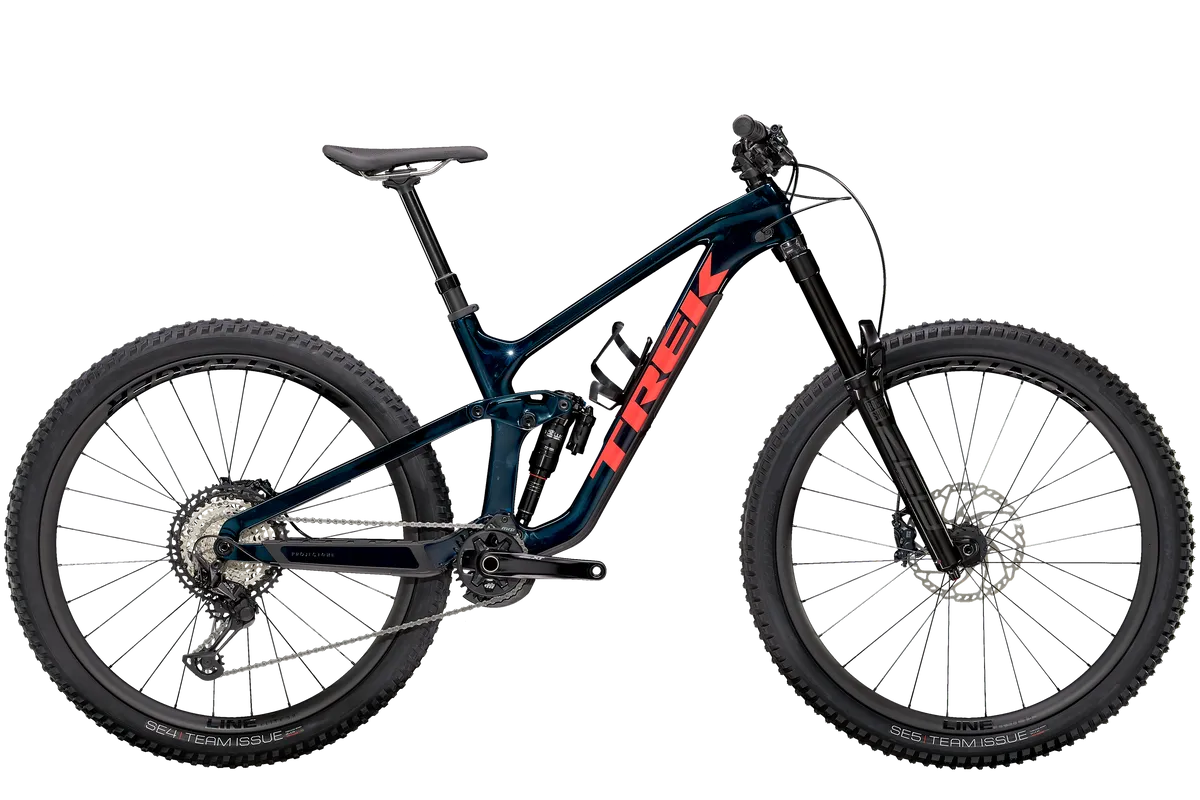
- Frame: OCLV Mountain Carbon main frame and stays
- Fork: RockShox ZEB Select+
- Shock: RockShox Super Deluxe Ultimate, Thru shaft three-position damper
- Drivetrain: Shimano XT M8100, 12-speed, 10-51t
- Brakes: Shimano SLX M7120
- Price: £5,250 / €5,999 / $5,999
Trek Slash 9.8 GX
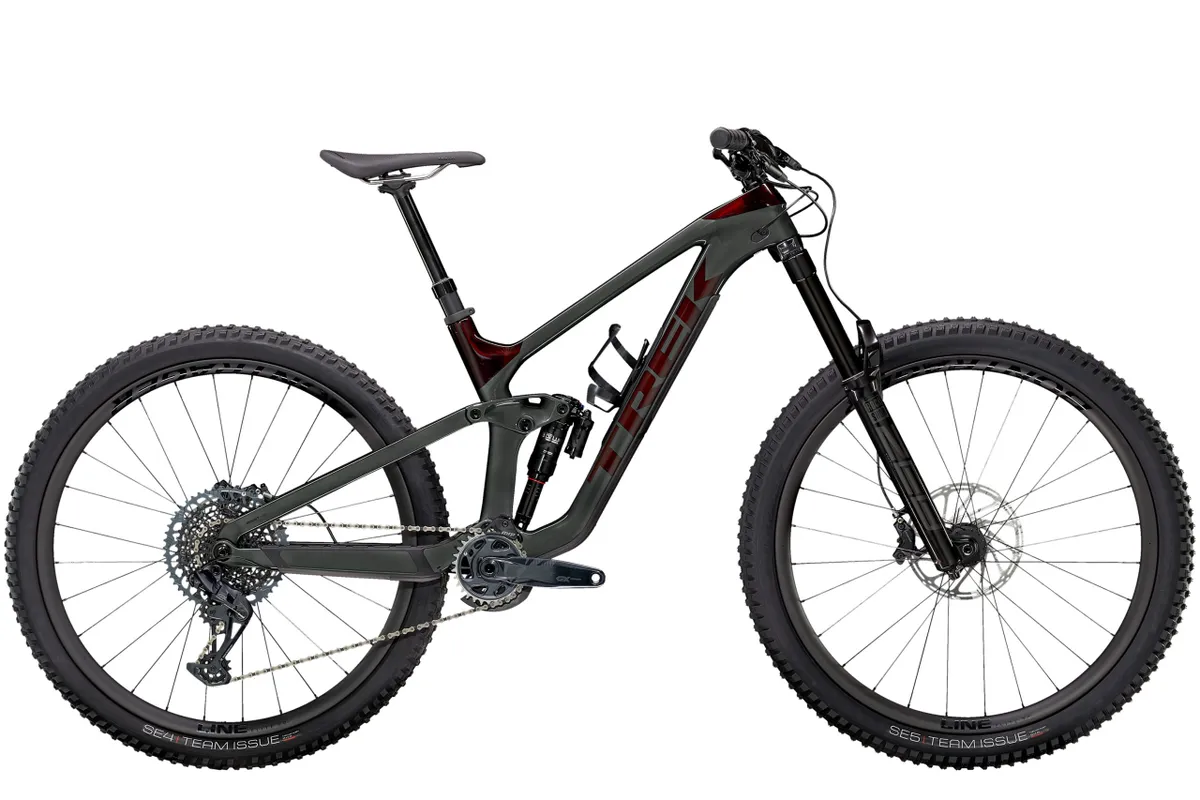
- Frame: OCLV Mountain Carbon main frame and stays
- Fork: RockShox ZEB Select+
- Shock: RockShox Super Deluxe Ultimate, Thru shaft three-position damper
- Drivetrain: SRAM GX Eagle, 12-speed, 10-52t
- Brakes: SRAM G2 RSC
- Price: £5,800 / € 5,999 / $6,599
Trek Slash 9.9 XO1
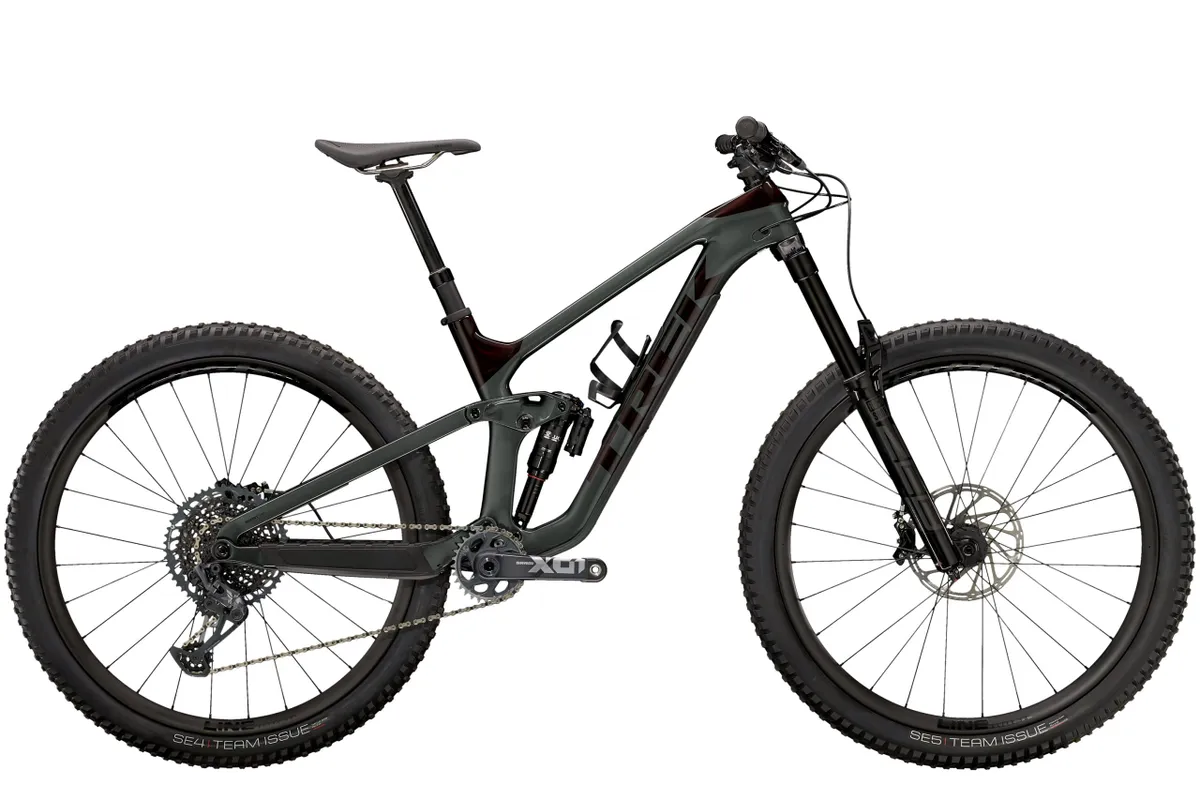
- Frame: OCLV Mountain Carbon main frame and stays
- Fork: RockShox ZEB Ultimate
- Shock: RockShox Super Deluxe Ultimate, Thru shaft three-position damper
- Drivetrain: SRAM X01 Eagle, 12-speed, 10-52t
- Brakes: SRAM Code RSC
- Price: £7,500 / €7,999 / $8,499
